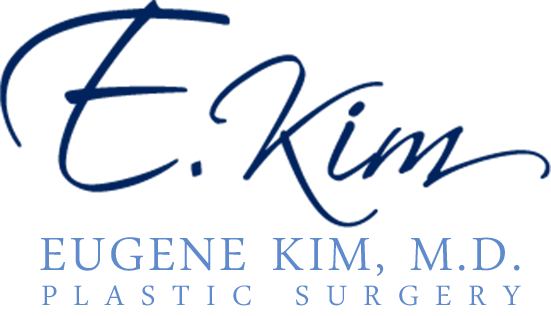 Noticing an extra fold or crease on your breast after augmentation can be concerning. Many patients describe it as their breast looking like it has “two folds” or “a double line” beneath the nipple. In most cases, this condition is a double bubble deformity, but several factors can cause this appearance. Understanding why it happens helps patients seek appropriate solutions. Board certified plastic surgeon Dr. Eugene Kim provides breast augmentation and breast revision to patients in Beverly Hills, Los Angeles, Santa Monica, West Hollywood, CA, and surrounding communities.
Noticing an extra fold or crease on your breast after augmentation can be concerning. Many patients describe it as their breast looking like it has “two folds” or “a double line” beneath the nipple. In most cases, this condition is a double bubble deformity, but several factors can cause this appearance. Understanding why it happens helps patients seek appropriate solutions. Board certified plastic surgeon Dr. Eugene Kim provides breast augmentation and breast revision to patients in Beverly Hills, Los Angeles, Santa Monica, West Hollywood, CA, and surrounding communities.
What Does It Mean to Have “Two Folds”?
When you see two distinct curves or lines along the bottom of your breast, it indicates that the natural inframammary fold (the crease under the breast) and the new implant crease are misaligned. The tissue above and below the implant settles differently, creating the illusion of two separate lower breast contours.
Most Common Causes
1. Double Bubble Deformity
This is the most frequent reason for a two-fold appearance. It occurs when the implant sits too low, and the natural breast tissue sits higher. The original breast crease remains visible above the implant’s new crease.
Contributing factors:
-
Incomplete release of the inframammary fold during surgery
-
Implant placement too low
-
Tight or short lower breast tissue
-
Postoperative changes such as tissue relaxation or scarring
2. Bottoming Out
If the implant has descended too far down, the skin stretches and the nipple appears high on the breast mound. The lower fullness exaggerates the natural crease, creating the illusion of multiple folds. This often happens with large or heavy implants or weak tissue support.
3. Capsular Contracture
In some cases, tightening of scar tissue around the implant (capsular contracture) can distort shape and push the implant upward, while natural tissue droops downward—creating irregular folds or a double-crease effect.
4. Aging and Skin Laxity
Over time, gravity and natural aging cause skin to lose elasticity. Even without complications, this can make the lower breast fold more visible or create the appearance of new creases beneath the implant.
5. Incorrect Implant Plane
Choosing between submuscular (under the muscle) and subglandular (above the muscle) placement affects how the implant interacts with the natural breast fold. Improper plane selection for a patient’s anatomy can increase fold visibility or create double contours.
How Surgeons Correct the Problem
For Double Bubble: Repositioning the implant higher or lower to align with the natural fold, releasing or reconstructing the inframammary fold, or switching to a different implant size or type (such as Motiva Ergonomix for natural movement).
For Bottoming Out: Tightening the implant pocket with internal sutures, using acellular dermal matrix (ADM) or mesh for support, or downsizing implants to reduce tissue strain.
For Capsular Contracture: Removing or replacing the implant and scar capsule (capsulectomy) and possibly switching placement planes to reduce recurrence risk.
What to Expect from Revision Surgery
Recovery from revision is similar to the original augmentation, with most patients returning to normal activities in one to two weeks. Results become noticeable as swelling subsides, and the final breast contour appears smoother and more symmetrical.
How to Prevent Future Issues
-
Choose a board-certified plastic surgeon experienced in revision work.
-
Select implants that match your tissue strength and body proportions.
-
Follow all post-surgical guidelines, especially wearing supportive garments.
-
Maintain stable weight and avoid strenuous activity during recovery.
The Takeaway
If your breast appears to have two folds or an unusual crease after augmentation, it’s likely related to implant position or tissue behavior. Fortunately, modern revision techniques can correct these issues safely and effectively. With a skilled surgeon, you can restore a natural, balanced contour and regain confidence in your results.
Contact the Office of Beverly Hills Plastic Surgeon Dr. Eugene Kim
Click here see more plastic surgery procedures and treatments performed by Board Certified Plastic Surgeon, Dr. Eugene Kim on patients in Beverly Hills, Los Angeles, West Hollywood, Santa Monica, CA and surrounding areas or call 310-271-6996 to schedule a consultation.
